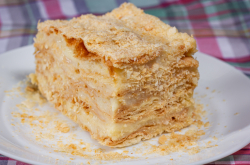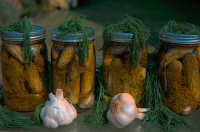'How can you have this instead of yogurt in the morning?' My American husband was horrified when he first saw our entire family consume platefuls of steaming pelmeni doused with sour cream and mustard. And then he took a bite and was converted.
Even the skinniest of Russian girls love pelmeni, the Russian take on meat dumplings. It’s about that microburst of hot, savory broth when you bite through the thin dough, the flavorful meat inside, the satisfaction of dripping butter or sour cream all over your chin, and the happy feeling that you can face the snow again.
At 200 to 500 roubles ($3-7.5) per kilo, they’re also the all-in-one meal that most people can afford and have enjoyed for generations.
It’s believed that the concept of dumplings originated in China, but there are versions of the same thing in pretty much every culture. In Russia, they’re thought indigenous to the Siberia region where they’d be used as a way of preserving meat via freezing.
The dough for pelmeni is typically just flour, eggs, water, and salt. The classic filling recipe calls for equal parts of beef, pork, and veal mixed with chopped onion and spices, but you can also find them with chicken or fish.
One of the reasons they’re so popular is it’s very hard to ruin them - just toss them in a pot of boiling water or broth, wait for them to float and let them boil for another 3 minutes. Done. Or you could then fry them. But that’s a whole other level of addiction.
The pelmenis that we grew up with in the ’80s came from a cardboard box and were basically a clump of dough and questionable minced meat. When you cooked them, gray pieces of paper would sometimes stick to a pelmen' (which is what you call an individual dumpling) but somehow we didn’t care. Every now and then my grandparents would make their own. Granddad would grind the meat and we’d spend an evening filling little pieces of dough and shaping them into “ears”. The social part was just as important as the final product. Now the frozen section of every neighborhood grocery store has at least a dozen varieties, ranging in size, filling and price.
Even though they’re so accessible, pelmenis are fun to try in a cafe or even a restaurant, as local chefs often love to show off their skills with this classic dish. It’s a perfect introduction to Russian food, especially if beet soup is not your thing, for a working lunch, for an eating competition, for warming up on a freezing day, or even for your first date.
We like Pelmenya (with locations close to our campuses on Lomonosova and Kronversky) and sometimes order delivery from Lepim Varim (“we make them, we boil them”), but you can find them in all sorts of places.
In Russia, you’ll always be a great host if you keep a bag of pelmeni in your freezer. Or better yet, host a pelmeni-making party.




